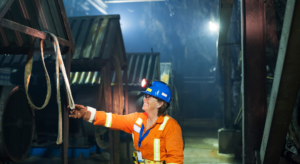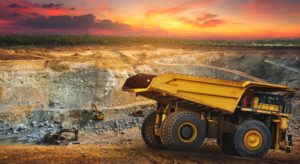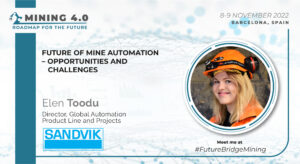The principles of good ESG are not new and not unique to the mining industry. But most industries also don’t come under the same scrutiny as mining. After all, from vehicle emissions to environmental disruption, mining does leave quite a literal impression on the landscape and communities near it. As a result, the industry needs to consider how it can be more sustainable and build better connections with the communities and governments it works with. It is also useful to take a look at some existing ESG initiatives practiced in the industry to see what can be expanded and improved.
Why does ESG matter?
ESG is important for the image and reputation of practically every company, but mining has a specific need to improve its image. The industry is often villainized by environmental groups for the disruption and pollution it causes, sometimes with good reason. As a massive emitter of CO2, the industry is also in the crossfire of the push to decarbonize. Image isn’t just the random opinions of the layperson, it affects how investors see the industry. Being a partner with a company with a reputation for destroying some ecosystem is not appealing to the average fund or investor. Similarly, more and more workers are indicating that they do really care about ESG. As the industry is suffering from labor shortages, it is highly risky to alienate in-demand specialists.
Similarly, governments, particularly in places with strong NGOs will be under pressure to regulate and even punish mining companies that have too negative of an effect on an area. Poor ESG performance comes with the risk of fines and possibly increased regulation in the future. Acting like a villain will attract more scrutiny which will have a negative effect in the long run. Poor performance can also endanger licenses as countries might prefer to do business with a company that has a better track record.
What can be done about ESG?
Companies need to assess and track risk. While this seems like common sense, and dangerous environments like mines already entail a good deal of risk management, many companies do not properly measure and consider risks throughout the entire lifecycle of a mine. As a result, ESG-related risks get overlooked by many decision-makers, with negative effects on the company and negative externalities in general. Multiple international agencies and their national counterparts publish best practice guides and industry standards. These are a good way to assess where your company stands, though ideally, one would learn from peers.
A corporate commitment to ESG is another good way to manage it. Firstly, it communicates to stakeholders what your values are and it also creates internal pressure to do better. This can help ensure that the company does its best to avoid blatant greenwashing, as ESG values would be internalized, not just communicated outwardly. Over time this would establish a culture of valuing ESG that could help the company holistically manage this question would large overhauls of any programs.
The “E”
Of all three measures, the environment is the most important for most mining companies. We have written about community participation before as well, but the number one disruption caused by some operations is environmental. As a result, this is where companies need to focus their efforts. And to their credit, the industry is embracing a lot of positive changes. Digitalization and sustainable energy are both making their way into various operations. This trend is likely to continue as battery technology develops. Some mines may also consider hydrogen-powered fleets. In general, there are many potential technological solutions that can greatly benefit an environmentally conscious mine, but only if management works out a good way to implement it.
So how should companies approach ESG?
The bottom line is that most companies need to start assessing their current risk now. Whether it’s an environmental disaster or aggressive new regulations, the industry needs to have roadmaps in place for a changing world. Companies need to remember that a holistic approach is vital, so climate experts, technical experts, lawyers, and even peers should all be consulted to prepare one’s self as best as possible.
Industry leaders can benefit from meeting and interacting with peers from around the world to share the best insights and experiences. Join key decision-makers at the Efficient Mining Operations Summit in Barcelona, Spain from May 4th to 5th to learn more. Visit future-bridge.eu or mining-events.com and follow us on our social media to keep track of other events about sustainability in the mining and metals industry.





